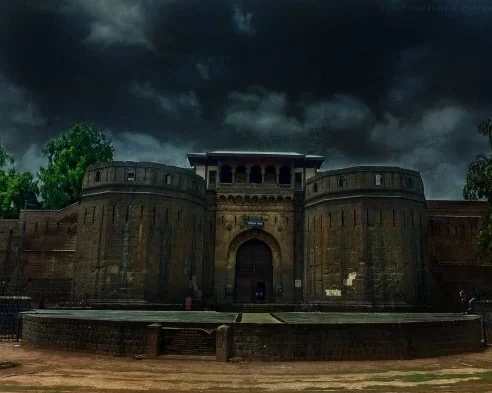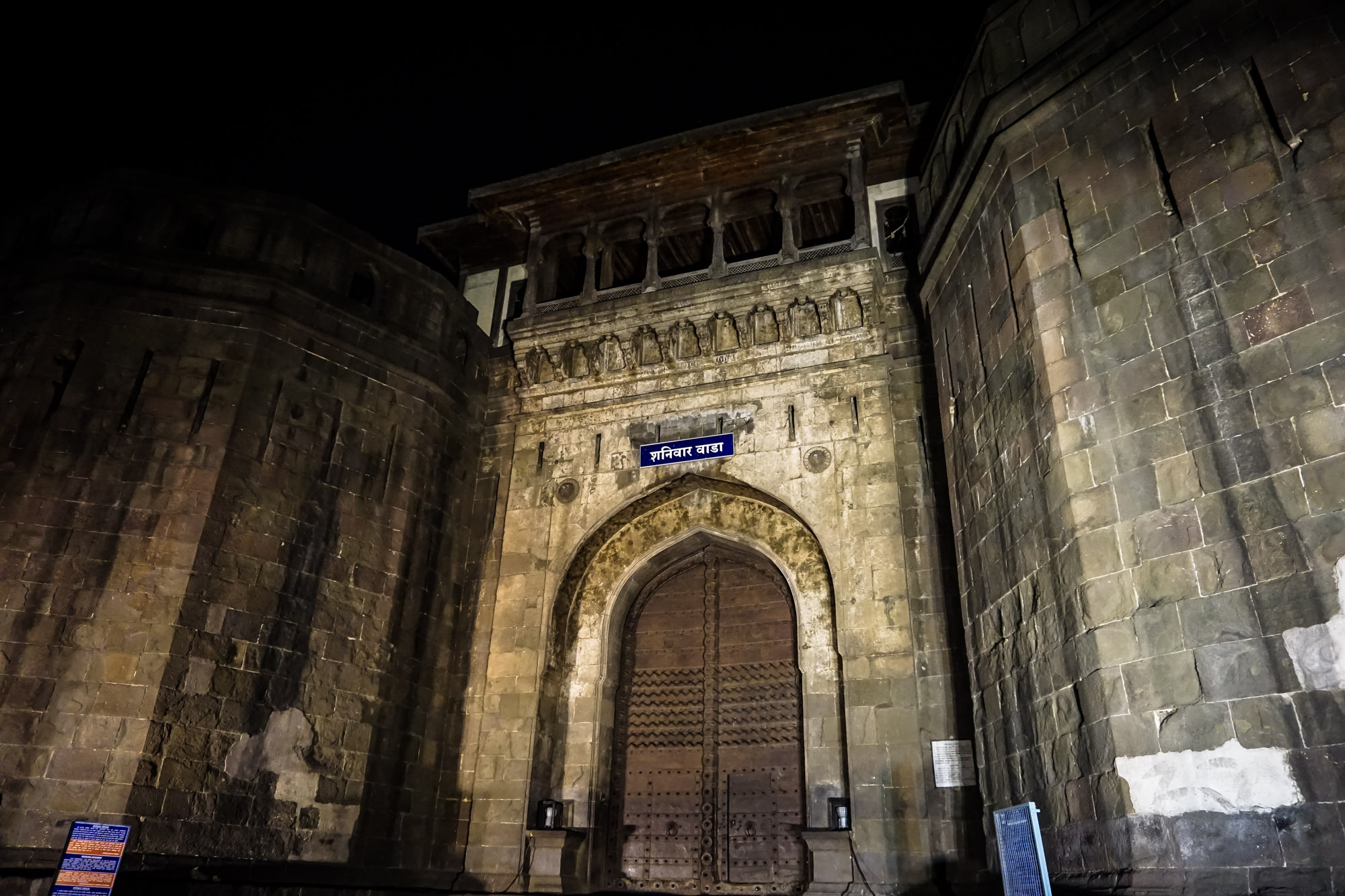The Ghost of Shaniwarwada Fort, Pune: A Chilling Tale of Betrayal and Haunting Cries
In the heart of Pune, Maharashtra, stands Shaniwarwada Fort, a 286-year-old testament to the Maratha Empire’s glory and a site of chilling supernatural lore. Once the grand seat of the Peshwas, this historic fortress is now infamous as one of India’s most haunted places, home to The Ghost of Shaniwarwada Fort—the restless spirit of young Peshwa Narayanrao. His desperate cries of “Kaka, mala vachva!” (Uncle, save me!) are said to echo through the fort’s ruins on full moon nights, a haunting reminder of his brutal murder in 1773. Drawing history buffs, ghost hunters, and tourists alike, Shaniwarwada’s eerie tale captivates all who visit. In this blog, we unravel the tragic story of Narayanrao’s ghost, explore the fort’s storied past, and reveal why it remains a must-visit for thrill-seekers.
Shaniwarwada Fort: A Maratha Masterpiece
Built in 1732 by Peshwa Bajirao I, Shaniwarwada Fort was the political and cultural epicenter of the Maratha Empire, covering 625 acres along the Mutha River in Pune. Named after the Marathi word for Saturday (Shaniwar), the fort was inaugurated on a Saturday, January 22, 1732, at a cost of ₹16,110—a significant sum for the time. Designed with teak from Junnar, stone from Chinchwad, and lime from Jejuri, the seven-story palace boasted intricate wooden arches, marble floors, Persian rugs, and paintings from the Ramayana and Mahabharata. Its five iconic gates—Delhi Darwaza, Mastani Darwaza, Khidki Darwaza, Ganesh Darwaza, and Narayan Darwaza—and nine bastion towers symbolized Maratha might. The Delhi Darwaza, facing north toward the Mughal capital, featured 72 steel spikes to deter elephant attacks, reflecting Bajirao’s bold ambitions.
Shaniwarwada was home to Bajirao I, his wife Kashibai, and their descendants, including the ill-fated Narayanrao. It hosted grand halls like Thorlya Rayancha Diwankhana (the court of Bajirao I), Naachacha Diwankhana (dance hall), and Juna Arsa Mahal (hall of mirrors), alongside the lotus-shaped Hazari Karanje fountain. However, a devastating fire in 1828, which raged for seven days, reduced the palace to ruins, leaving only its ramparts, gates, and foundations. The fort’s tragic history, marked by treachery and loss, set the stage for its haunted legacy.

The Legend of Narayanrao’s Ghost
The ghost of Shaniwarwada Fort is tied to the gruesome murder of Narayanrao Peshwa, the fifth Peshwa, who ascended the throne at age 16 in 1772. After the death of his father, Nanasaheb, and brothers, Vishwasrao and Madhavrao, Narayanrao inherited the Maratha leadership, sparking envy in his uncle, Raghunathrao, and Raghunathrao’s wife, Anandibai. Raghunathrao, ambitious for the Peshwa title, was placed under house arrest by Narayanrao for his disloyalty, further fueling Anandibai’s resentment.
On the night of Ganesh Chaturthi, 1773, Anandibai orchestrated a conspiracy, hiring Gardi hunters to assassinate Narayanrao. The killers stormed his chamber, waking the young Peshwa. Desperate, Narayanrao fled toward Raghunathrao’s room, crying “Kaka, mala vachva!” (Uncle, save me!). But his pleas were in vain. The Gardis caught him, brutally murdered him, and dismembered his body, disposing of the pieces in the nearby Mutha River. Because his remains were never properly cremated per Hindu rituals, locals believe Narayanrao’s spirit remains trapped in Shaniwarwada, unable to find peace.
Since the murder, locals and visitors report hearing Narayanrao’s anguished cries on full moon nights, particularly near the fort’s walls or the riverbank. Some claim to see his apparition—a young boy in royal attire—wandering the ruins or along the Mutha River. The fort’s light and sound show, held from 6:30 to 8:30 PM, openly recounts this tale, cementing Shaniwarwada’s haunted reputation.
Paranormal Encounters at Shaniwarwada
Shaniwarwada’s eerie aura is amplified by numerous paranormal reports, especially after sunset, when entry is prohibited past 6:30 PM. Key encounters include:
- Haunting Cries: Residents near Shaniwar Peth swear they hear “Kaka, mala vachva!” on full moon nights, a chilling echo of Narayanrao’s final moments.
- Ghostly Apparitions: Visitors and guards report seeing a spectral boy near the Narayan Darwaza or riverbank, believed to be Narayanrao’s ghost.
- Unexplained Phenomena: A 2014 account describes a dog barking furiously at a fort wall on a full moon night, suggesting animals sense Narayanrao’s presence.
- Fire Spirits: Locals believe the 1828 fire, which killed many, left additional spirits wandering the fort, adding to its supernatural populace.
Paranormal investigators, like Amy of Amy’s Crypt, have explored Shaniwarwada, noting its dark history but finding no conclusive evidence. The fort’s isolation at night, coupled with its tragic past, fuels these tales, making it a hotspot for ghost tourism.
Historical and Skeptical Perspectives
Shaniwarwada’s haunting is rooted in its violent history. Narayanrao’s murder, detailed in the book Assassination of the Peshwa, was a pivotal blow to the Maratha Empire, weakening its leadership. The fort’s fall to the British in 1818 during the Third Anglo-Maratha War, followed by its use as a prison and asylum, and the unexplained 1828 fire, deepened its tragic legacy. Some locals also attribute the fort’s cursed aura to a childhood friend of Kashibai, who cursed Shaniwarwada after Bajirao killed her husband on suspicion of treason.
Skeptics offer rational explanations:
- Acoustics and Imagination: The fort’s high walls and river proximity may amplify wind or animal sounds, mistaken for cries.
- Cultural Beliefs: Hindu traditions emphasize proper cremation for a soul’s release, making Narayanrao’s unceremonious disposal a natural catalyst for ghost stories.
- Tourism Hype: The haunted narrative, amplified by films like Bajirao Mastani (shot at Shaniwarwada), draws visitors,акон
Skeptics like local historians argue the stories are folklore, not fact, with no scientific evidence of hauntings. Yet, the enduring legend, passed down through generations, resonates with Pune’s cultural memory of Maratha betrayal.
Shaniwarwada Today: A Haunted Tourist Magnet
Maintained as a tourist site, Shaniwarwada attracts nearly 300 visitors daily, drawn by its Maratha heritage and ghostly lore. Open from 8 AM to 6:30 PM, entry costs ₹5 for Indians and ₹125 for foreigners, with a ₹25 fee for the light and sound show (Marathi: 7:15 PM, English: 8:15 PM). Visitors can explore the Delhi Darwaza, Mastani Darwaza, Hazari Karanje fountain, and garden complex, though most interiors were lost to the 1828 fire. Located 12 km from Pune Airport and 3 km from Pune Railway Station, it’s easily accessible by cab or auto. The fort’s proximity to attractions like Rajiv Gandhi Zoological Park (7.5 km) and Sinhagad Fort (34.6 km) makes it a key stop on Pune itineraries.
The 2015 film Bajirao Mastani, filmed at Shaniwarwada, boosted its popularity, with tourists flocking to see Mastani Darwaza and relive the Peshwa saga. Posts on X highlight the fort’s eerie vibe, with users sharing tales of Narayanrao’s cries, further fueling its mystique.
Why Visit Shaniwarwada Fort? Tips for Travelers
Shaniwarwada offers a blend of history, architecture, and supernatural intrigue, making it a must-visit in Pune:
- Best Time: Visit from October to February for pleasant weather, or July–August for a monsoon-drenched, eerie vibe.
- Getting There: From Pune Airport (15 minutes by cab) or Pune Railway Station (10 minutes by auto), Shaniwarwada is centrally located at Shaniwar Peth.
- What to See: Explore the five gates, Hazari Karanje fountain, and garden complex. Attend the light and sound show for Narayanrao’s story.
- Ghost Hunting: Visit during the day, as night entry is banned. Bring a camera and an open mind, but respect the no-trespassing rule after 6:30 PM.
- Safety: Stay with groups in busy Shaniwar Peth, and avoid isolated areas near the river at night.
- Cultural Respect: Honor the fort’s Maratha legacy and local beliefs about Narayanrao’s spirit.
Conclusion: A Cry That Echoes Through Time
The Ghost of Shaniwarwada Fort is more than a chilling tale—it’s a poignant reminder of betrayal’s lasting scars. Narayanrao’s brutal murder and uncremated remains have woven a legend that haunts Pune’s collective memory, drawing visitors to Shaniwarwada’s crumbling walls. Whether you believe in his restless spirit or see the story as Maratha folklore, the fort’s eerie ambiance and historical weight are undeniable. Visit Shaniwarwada to walk in the footsteps of Peshwas and listen for Narayanrao’s cry under the full moon—or decide for yourself if the ghost is real.
Have you visited Shaniwarwada or heard its haunting cries? Share your experiences in the comments, and subscribe for more spooky stories from India’s haunted heritage!
Disclaimer: The Ghost of Shaniwarwada Fort is based on folklore and historical accounts, with no scientific evidence of paranormal activity. Approach with curiosity and respect for Pune’s Maratha legacy.If you visit Shaniwarwada, stand quietly by the gates as the moon rises. Listen closely—past the hum of the city, beyond the rustle of leaves—and you might just hear the faint, anguished voice of a prince who never found peace.
